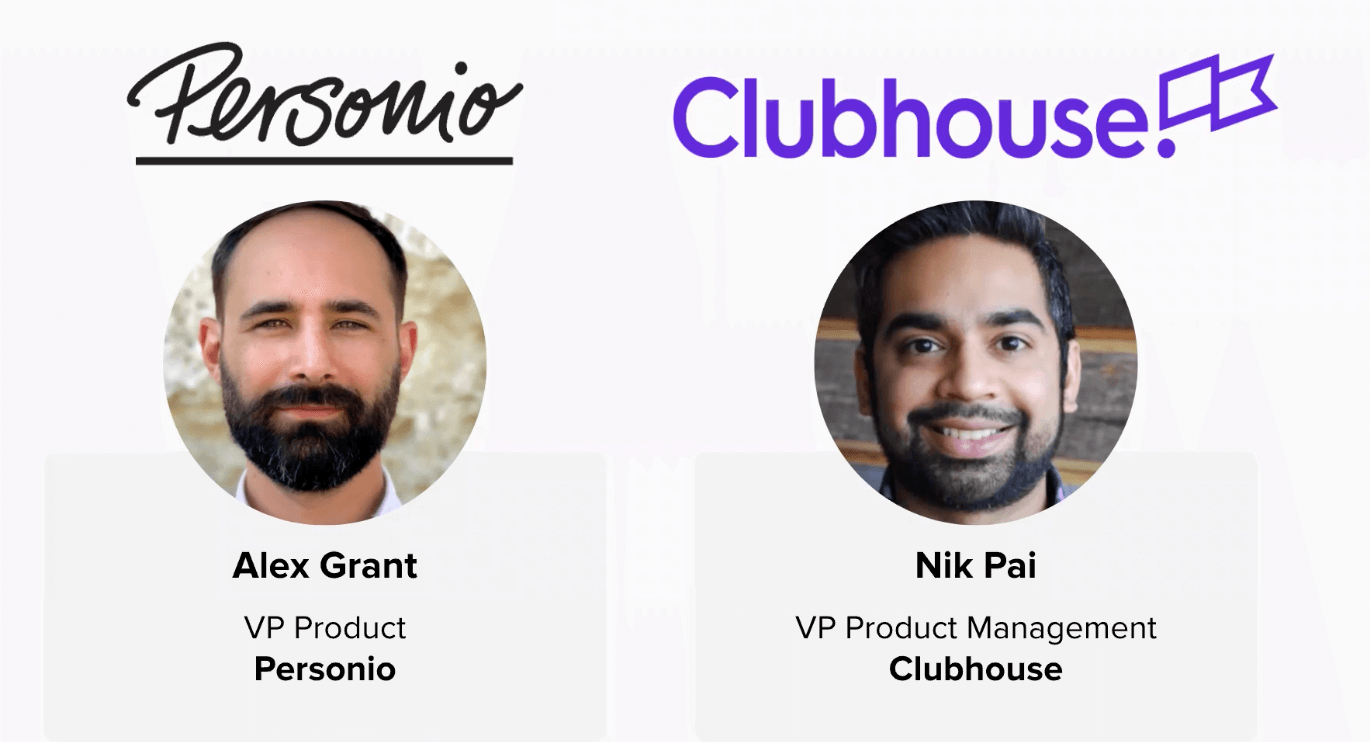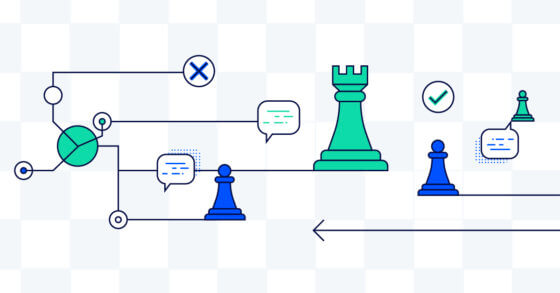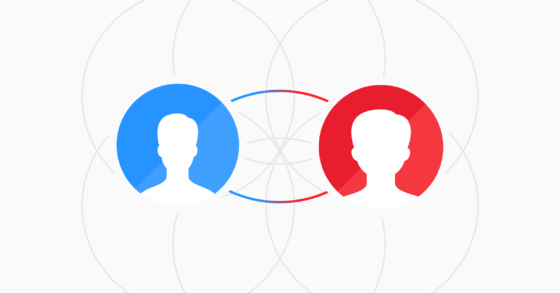A discussion with product leaders from Personio and Clubhouse

During a recent company all-hands meeting, our SVP Customer Success, Zach Anderson, hosted a fireside chat with two product leaders: Nik Pai and Alex Grant.
The aim of the discussion was for our team to learn more about the nuances of product management at large and small organizations, how product teams can better collaborate with other strategic teams within the company, and what customer-centricity really means.
Here’s a lightly edited version of the conversation.
Zach Anderson: Welcome, Nik and Alex. Let’s start with a brief introduction to who you are, your roles, teams, and the companies you work for?
Nik Pai: Sure. I’m Nik Pai, and I lead product at Clubhouse. I’m not talking about the audio app – we’re a project management tool focused on software teams. You can think of us as a competitor to Atlassian’s Jira. We’re focused on modern software development and how to enable developers and product teams to do their best work.
Alex Grant: I’m Alex Grant, and I’m VP Product Management at Personio, a company based out of Munich, Germany. We’re an HR suite solution for midmarket companies in Europe.
ZA: Alex, when I first met you, you were leading an account management success team at Hootsuite. Now, you’re running the entire show from a product perspective. Any advice you can give folk aspiring to get into product?
AG: For sure, it’s a conversation I love having.
First of all, you have to embrace the fact that product management is new and diverse enough that there isn’t one set path into the discipline. It’s about understanding the skills and mindset that really make successful product managers and then trying to build those muscles in whatever function you are in.
It’s about understanding data, customer and market trends, and how to do effective prioritization. Then there are lots of skills you can learn inside the organization, like running agile or collaborating effectively with design.
“I would encourage people to be curious, ask questions, and embrace multiple experiences. Ultimately, understanding the customer and the market is your superpower. That’s what everyone in product is trying to do.”
ZA: Nik, you’ve had a fascinating career path. You founded your own company, which Hootsuite then acquired. So you went from leading a small startup to leading a large product team at a company with over 1000 employees, then back to a relatively small company of around 60 people at Clubhouse. What are the differences between leading product orgs in large and small companies?
NP: There are two parallel things happening as companies mature. One is the role of product management, and the second is the maturity of the product itself.
Typically, in small organizations, you want to make your engineers as efficient as possible. Product management, in some ways, becomes project management. There’s usually some level of an idea that you’re trying to get into that MVP stage and you’re having light conversations with customers.
As you get larger, you start to have more of a squad focus. Product starts to get a little bit more focused on prioritization because you now have customers. You have a lot of signals coming in, and you are trying to understand those signals. You start to push execution and delivery over to engineering, and you push solutioning over to a more mature design org which may not have been there in the early stages.
As you get even larger, you start to become more like the GM of that product line. You’re thinking more about the business. So I’d say there’s this constant shift in the role of product manager as the company evolves and matures.
Then there’s the product itself. When you are super early, everything you are building is new. As you get larger, you have to start focusing on things like scalability and technical debt. Where you used to have 100% of your capacity focused on customers, you now have to decide what you are going to put into iterating on existing products, what you are going to put into innovation, what you are going to invest into technical scalability, and so on.
As you get really big, you have a lot less time to spend on new, innovative features because there’s a lot more infrastructure that you have to deal with.
ZA: Did you see any change in the impact of customer-centricity in those different stages of growth? Is it easier to listen to customers when you’re smaller or larger?
NP: I think you have a lot of signals in both scenarios. Your ability to have conversations with all of your customers is perhaps easier when you are small. Also, when you are more focused on a single persona, it’s easier to be more focused on solving that group’s problems. If you have a ton of personas, multiple product lines, and multiple customer segments, it’s harder to make everyone happy from a customer-centricity perspective.
ZA: Alex, what learnings do you have about that change from managing a single-product, all-in-one solution for a focused market to having multiple product lines in a larger portfolio?
AG: One of the big learnings for me in the multiproduct environment is that the complexity doesn’t grow linearly – it grows exponentially. What Nik said resonates with me in terms of the evolution of the product function. But I also think that from an organizational complexity standpoint, when you start to go multiproduct, you have to have your personas tight – from both a user and a buyer perspective.
You have to embrace the fact that you are essentially running multiple businesses simultaneously, whether intentionally or unintentionally. That was one of the early lessons at Hootsuite when we completed an acquisition. We thought we had this new piece of technology that we could add in to our core, but what we actually had was this brand new business with different market dynamics, competitors, buyers, and users. So you have to embrace that complexity and be prepared for it.
ZA: Nik, you guys are going after a significant competitor in Atlassian. How do you talk about that internally as a disruptor in the space? Do you care about competitors, or do you try to stay in your lane and focus on the value you want to deliver?
AP: There are a couple of ways we think about the problem. One is that it’s great to have a big player like Atlassian in the space as they’ve paved the way for project management tools. From a sales perspective, there’s never a conversation about not having a budget for a project management tool.
The second side is what they’ve created. When Atlassian started, the way product development was done was very different. So we think a lot about how modern software is developed today. You have sales-led companies and marketing-led companies, but we’re seeing the evolution of more product-led companies, which is changing the way software gets built.
When you have a product-led company, you’re talking a lot more about the connections between other groups – how product interacts with marketing, sales, customer success, etc. That whole model is very different from how Atlassian built Jira from day one, which was more through issue-tracking. So that’s our problem space – that’s how we think about how we’ll approach and build our focus versus how Atlassian does it.
The third piece is that Atlassian is heavily built to be an enterprise tool, so there’s some level of complexity to implementing it. For us, focusing on the SMB market is an area where I think we can do better – by focusing on a persona rather than trying to be everything to everyone. That’s where our opportunity lies.
ZA: To wrap things up, let’s about the partnership between engineering and product. Alex, what do you think a good partnership looks like?
“I think the difference between good and great product organizations hinges entirely on the depth of trust between the primary actors.”
The primary actors are typically product management, design and UX, and engineering. We call this the triad, and it can be complemented by product marketers and data analysts. We try to empower that triad and build an environment of trust at every level of our organization. That’s the philosophical part of it.
Operationally, we try to codify that trust in some of our processes. We create co-authored briefs where it’s not just product outlining the scope and then throwing it over the wall – it’s a space where problem identification and solutioning happens collaboratively, and people feel bought into this process.
We also codify it in the way we plan. We consciously take our overall capacity and allocate different percentages to different strategic buckets. We embrace the fact that we need to do all of it to be successful.





